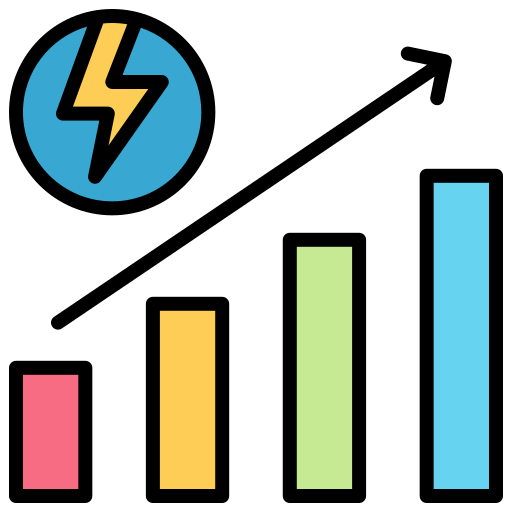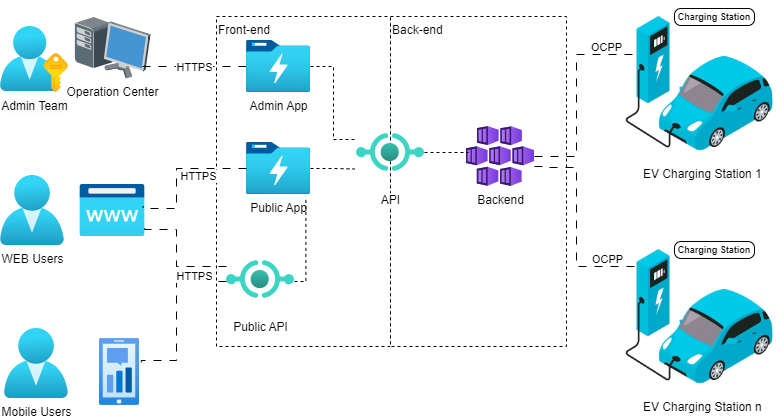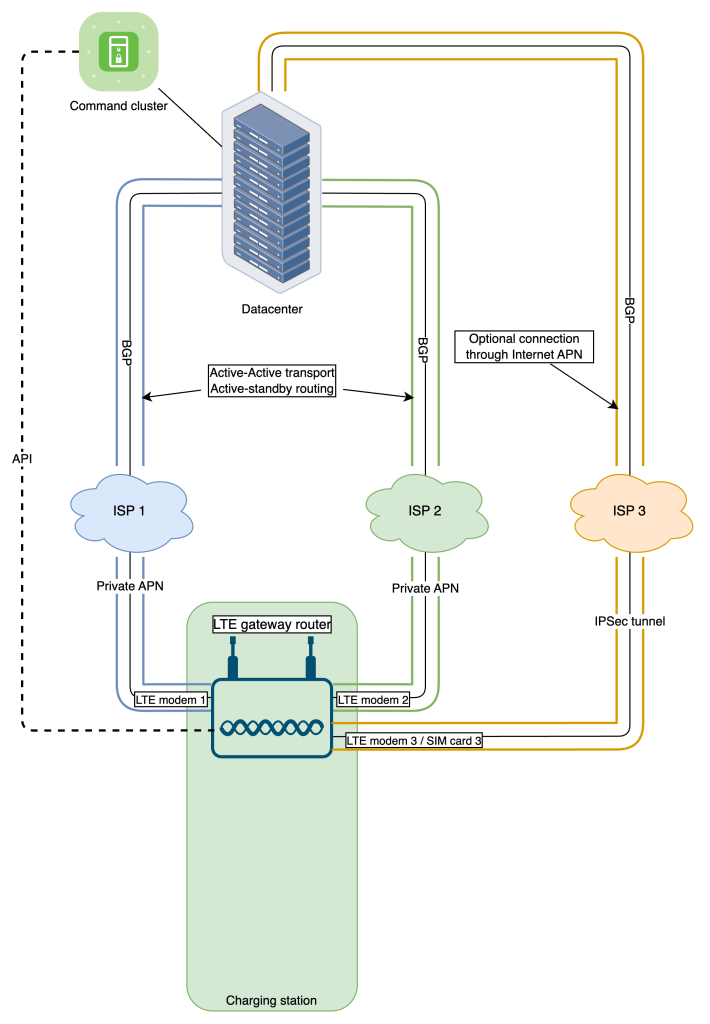














Our solution is characterized by its quick deployment capability and scalability, making it ideally suited to the rapidly growing e-mobility market.
By utilizing the public cloud, we achieve a very low Time-to-Market (TTM), while the microservice architecture and containerization ensure dynamic horizontal scaling of the system, adding additional nodes as needed. The release of new versions will be based on a CI/CD process, prepared for frequent deployment of new versions into production while maintaining operational continuity.
The challenges we face, such as handling chargers from different manufacturers and maintaining stable connectivity with individual charging stations, are actively addressed through the implementation of standards like OCPP, as well as the proposed network and software architecture.











